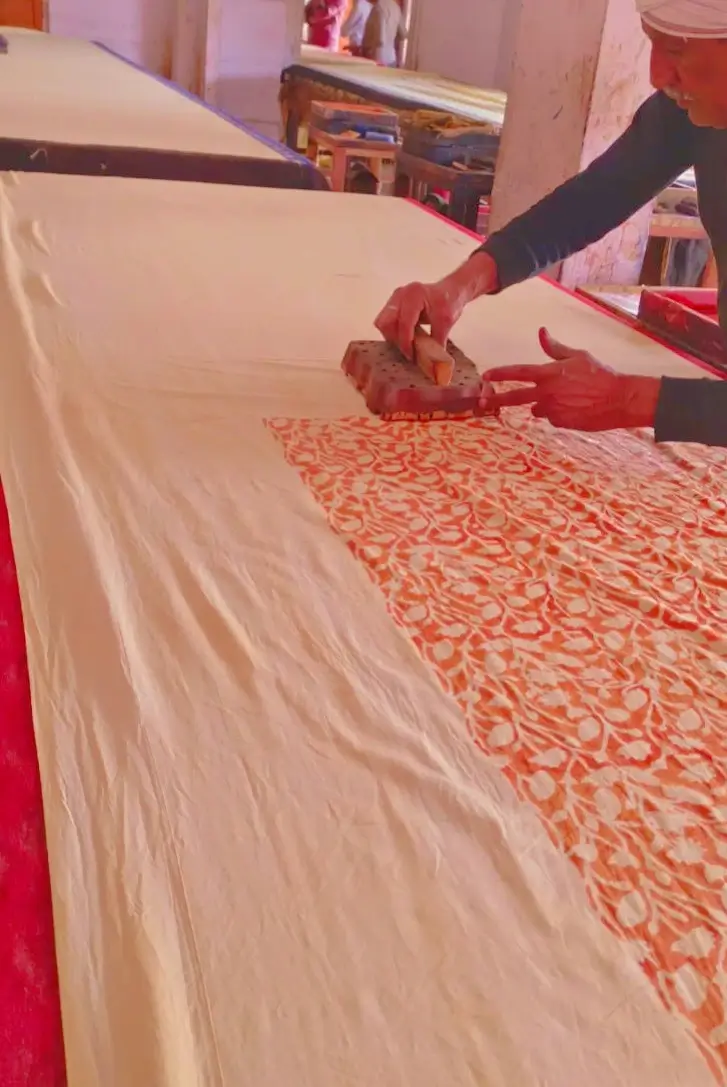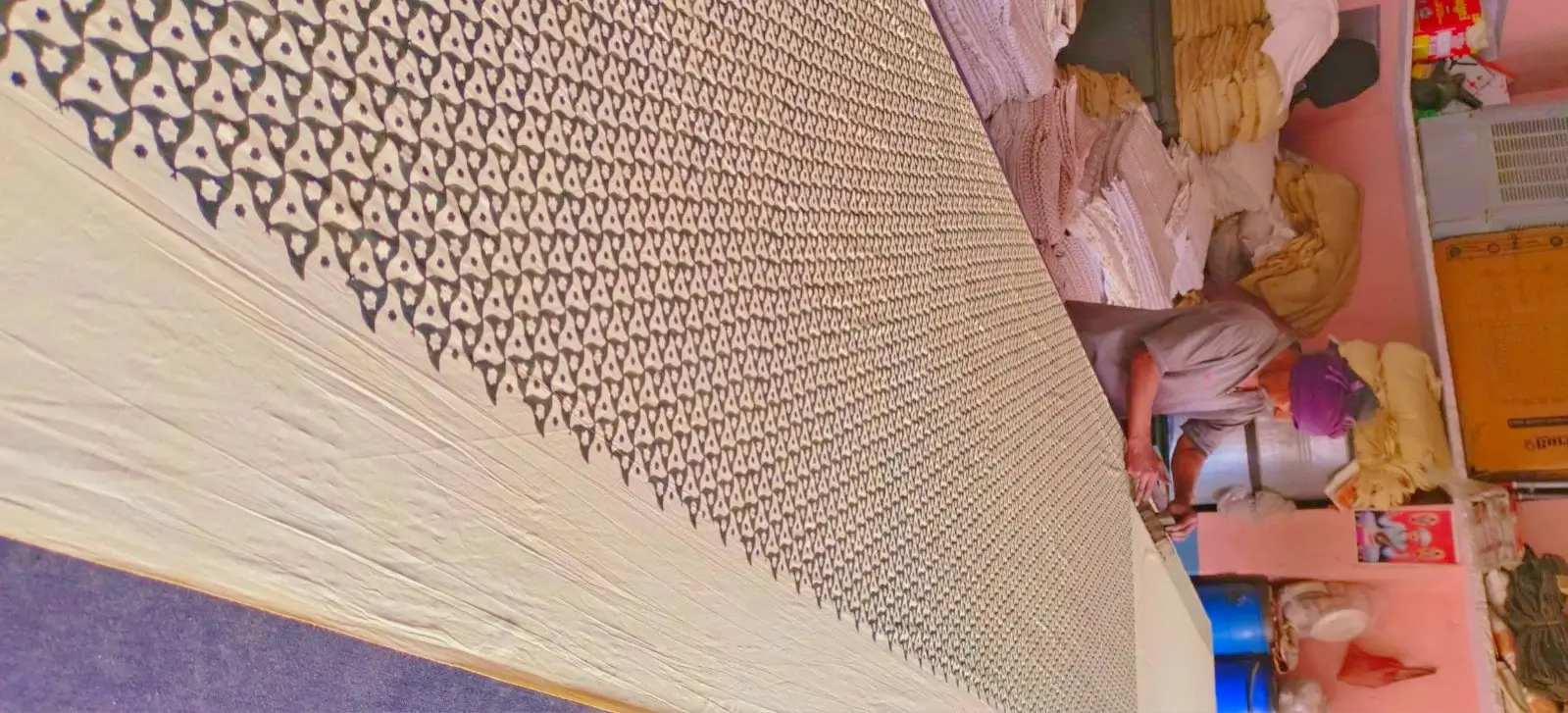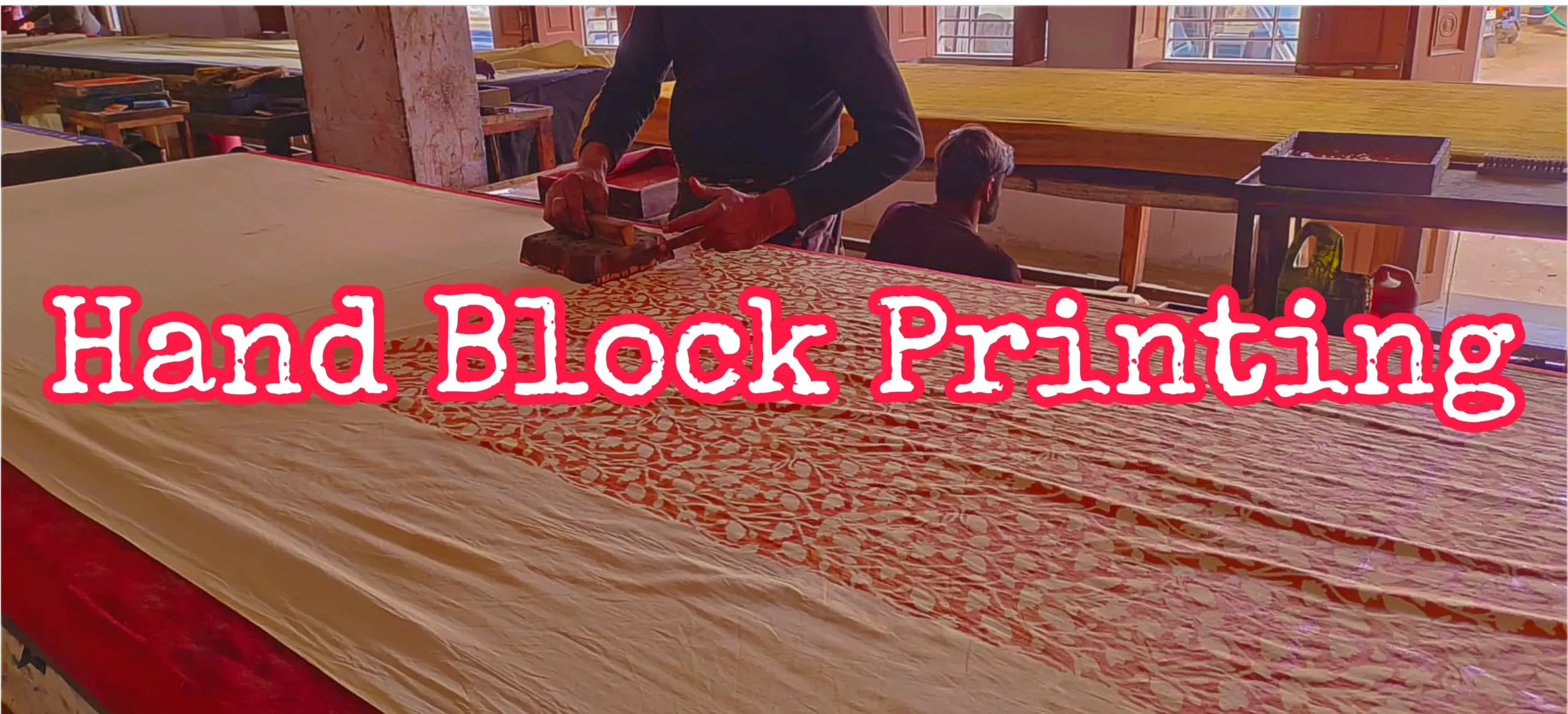In this evolving world of fashion, the trend of fast fashion is spreading around pretty quickly.
But do you know what stays constant?
It is homegrown brands like Raworiya, that stands out with their traditional designs like the Hand Block printing designs.
In this ultimate guide we will get to know all about Hand Block Printing.
So get ready to dive into the history, origin and procedure of this amazing this printing technique.
What is Block Printing? (Hand Block Printing)
‘Block printing’ is referred to the printing technique done by stamping the colour filled wooden blocks on the fabric. There are various terms like “Hand Block Printing”, “Woodblock printing” or “Hand Blocked” that are synonymous to Block Printing.
But, that’s not it.
Block printing is not just printing the designs onto the fabric.
There are a variety of steps involved in Hand Block Printing, from using a chisel to carve out the wooden blocks, to preparing the dyes for colouring the fabric.
Different kinds of printing techniques demand different skills, artistry and patience. It is an all inclusive mixture of the tasks which produces the finest quality prints.
Going Back to its Roots (History of Hand Block Printing)
Now that we know what Block Printing is, it is important that we shine a light on the origin or roots of the Hand Block Printing Technique.
This printing technique is said to have originated in China around the 3rd century. It was later found in different Asian and European countries.
It is safe to say that this printing technique is at least 2000 years old.
But do you know what makes it flawless and unique?
It is the essence of Indian craftsmanship and diversity which differentiates it from other prints.
Its arrival in India was made possible by the Chippa and Khatri community of Rajasthan. It was prominent in the areas like Bagru, Sanganer, and Barmer, as it was an age-old tradition of the communities residing there.
These villages were responsible for giving birth to prints like Sanganeri, Ajrakh and Bagru Printing, making Rajasthan one of the largest economic hubs for producing and trading these designs.
Types of Block Printing
In the Indian subcontinent, there are various type of block printing depending on different regions. So, here is a list of different hand block prints from different regions of India:
- Kalamkari Print
- Bagru Print
- Ajrakh print
- Dabu print
- Sanganeri Print
Differentiating these prints is not as easy as it seems, even though they originate from the state of Rajasthan. But there are some major difference in the printing technique and color selection.
If you want to differentiate between a Sanganeri Print and Bagru print, all you have to do is look at the background and design’s color. If the background is in a light shade, then it is a Sanganeri print. On the other hand, if the background color is dark, then it is a Bagru print.
What is Block Printing Used for?
This Heritage Art is in always attracting people because of its eye-catching feature. Many things are made through block printing including:
✮ Bagru Print Kurta/Kurti Etc.
Process of Block Printing (How to do Block Printing)
As mentioned before, block printing is not about stamping the wooden block on the fabrics. There are a large variety of steps included in the process of Block Printing.
So, here are some of the steps that are included in the intricate art of Hand Block Printing.
1. Carving the Woodblock (First Step for Block Printing)
Carving the Woodblock by hand is the most basic step in the block printing process. This step is considered to be a very slow process as it requires focus, patience and excellent degree of artistry. The craftsmen practice and teach this craft to their upcoming generations.
They use a steel chisel for carving the skeleton of the design on the block which is known to be very expensive.
The initial step of carving the Woodblock is drawing the design on a piece of paper freehand. With the drawing as a map, the craftsman draws the colour filled blocks on the block.
After tracing the design on the slice of Sheesham wood (the best for printing), the artists chisel it 1/3rd inches deep. This printing technique demands a lot of precision, which makes this art extraordinary.
The tools might look simple, but when used by these extremely talented artists, they create something higher than the art!
2. Preparing the Woodblock (Second Step for Block Printing)
After carving the wooden block, it is important to moisturise it, so that it doesn’t bend and twist.
To prevent that from happening, the wooden blocks are soaked in mustard oil for 10-15 days.
The craftsmen then make small holes in the areas that are meant to apply colour. Other than that, these holes are stuffed with cotton which makes sure that the colour is applied evenly.
While printing a design, craftsmen use one block with one colour at once.
Even for fabric borders, they use a different set of wooden blocks with different colours.
3. Getting the Fabric Ready
If you are a fabric enthusiast, you might already know that preparing fabric is an essential step in any project.
And similarly, it is an important step in the hand Block Printing too. However the process gets a little complicated.
- Before printing the cotton is soaked into a gentle bleach solution.
- After that, it goes through a vat of dye.
- It is then passed through two rollers which help in getting the excess dye out of the fabric.
- In the end, it is dried on large bamboo frames in the warm weather of Rajasthan.
- After drying, it is ironed with the help of a hot roller, getting rid of any crinkle.
In the end, it is cut into the desirable length, and then pinned to 5 metre long padded tables. After which it is cut and printed at the same time!
4. Recipe of the Colors
A major part of the printing procedure includes using the best dyeing technique for the design. There are some people who use instant pigmented dyes. On the other hand, there are people who use the beautiful organic colours made by vegetables. A small portion of people use the indigo Sol and discharge dyes for organic and rapid colouring.
Now that we have tested and mixed the dyes, it is time to bring forth the dyeing pad.
Now you must be wondering, what are dyeing pads?
Dye Pad is a wooden tray, which has a metal frame fitted with the nylon rope.
First, there are thick layers of rough fabric on the rope net. Then, the last layers are made of softer materials like silk, chiffon, or voile. The type of soft fabric used depends on how much dye is needed for printing.
After this essential step, the artisans pour the dye into pads, and use a wooden wedge to even out the surface of the pad.
5. Technique of Block Printing

Now this is where placements come into play during block printing.
Many craftsmen print the border first and then go into the main design. It is known as the outside-in orientation.
Before printing, the artist proceeds to print the outline of the design. After which the block printer takes the outline block, dips it into the dye pad and continues printing along the length of the table. The printer places the block carefully and then hits it with the heel of their hands to make sure that it prints evenly.
While carving the wood, the carvers use chisels to carve registration points on the outline block, which helps it in positioning equally with the other blocks.
These points can also help you in differentiating the mass produced textiles from the authentic hand printed ones.
After printing the outlines for the design, the artisans fill in the design with remaining colour, and then position the fabric to be printed again.
6. Final Touches (Last Step for Hand Block Printing)
Majority of the houses in Rajasthan have flat terraces, which is a great place to fix the pigments of the fabric by being left to dry for a couple of days.
Once the fabric is completely dry, they are sent to get washed up once again. It is an important step in setting up the colour of the textile, as one small mistake could ruin the entire fabric.
The end product is then sent to the store, where they are, stitched, ironed, checked for quality, and labelled. The textile is now ready for sale!
The Bottom Line

In India, block prints are highly valued. People have been perfecting the traditional craft of dyeing and colouring fabric using wooden blocks for generations. Prints like Rajasthan’s Dabu or Gujarat’s Ajrakh symbolise the country’s rich heritage and culture. India is a major producer and exporter of these block printed fabrics.



